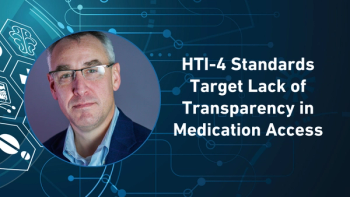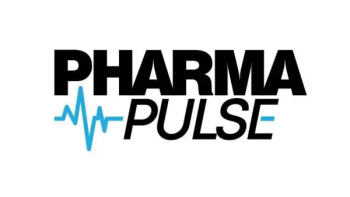Patient safety and medication adherence are some of the major concerns in the pharmaceutical industry. With an increase in medication errors, counterfeit medicines, and supply chain mismanagement, the industry has seen a rising demand for transparency, security, engagement, and digitization.1
Smart packaging as a game-changer
Smart packaging has emerged as a key solution to address these problems by integrating digital tools such as NFC (near field communication), digital tags readable by smartphones that store product information, certifications, and tracking details; QR codes (quick response codes), scannable codes that verify authenticity and provide instant product details to consumers; RFID (radio-frequency identification), radio tags that give each drug a unique ID for tracking and information sharing; and other similar new technologies into the packaging of pharmaceutical products.
The integration of such technologies offers several benefits like maintaining drug authenticity, allowing user engagement, enhancing patient adherence, enabling real-time tracking, and ensuring overall drug safety.1,2
The cost of medication errors and counterfeits
As per estimates by WHO, the global cost of medication errors can be as high as $42 billion per year.3 Moreover, in 2022, INTERPOL seized over 3 million units of illegal and counterfeit medicines in a global mission focused on cracking down on illegal online pharmacies.4 Such high level of inefficiencies in the industry makes smart packaging solutions much more relevant in today’s environment by helping to tackle these problems through innovations, including AI-driven label management, blockchain-enabled traceability, and digital adherence tools.
This article will dive into such innovations which are supporting the industry in overcoming major challenges.
AI-driven packaging: Reducing errors and accelerating compliance
Pharmaceutical packaging is not just limited to containing the drug—it also requires more complex features like storage safety, regulatory compliance, patient ease, and label clarity. With recent developments in AI and a growing demand for precision and patient-centricity, healthcare companies have started to integrate AI tools into medical packaging which can provide real-time data, maintain consistency, monitor product integrity, and reduce time-to-market.
Unlike smart packaging, traditional packaging involves manual artwork management and labeling, leaving high scope for human errors that can lead to delays and regulatory penalties. However, with the help of AI, these processes are automated, leaving minimal scope for human errors and ensuring regulatory compliance, while also accelerating time-to-market.
AI tools help ensure consistency in pharmaceutical packaging and labeling for regulatory compliance by automating content verification, pattern recognition, and real-time comparison with regulatory standards and product data. These tools use natural language processing (NLP) and computer vision to analyze both text and visual elements of packaging artwork, identifying discrepancies such as missing warnings, incorrect dosage information, or improper symbols.
Automation also streamlines the collection and organization of regulatory data, reducing manual effort and the risk of non-compliance while improving decision-making. By consistently including accurate dosing information, warnings, and proper symbols, AI helps companies meet compliance requirements, protect patient safety, and maintain brand integrity, while reducing operational risks and potential financial losses or product recalls.
An example for this is Almirall, a global pharmaceutical company that uses Esko’s WebCenter platform to streamline its artwork management for over 2,000 packaging designs, and consequently improving efficiency and reducing turnaround time. Another example can be AstraZeneca, which uses Loftware’s Smartflow platform to manage over 10,000 artwork changes annually, which has helped the company to reduce lead times by 60% and ensure compliance across 1,000+ stakeholders.
Key Takeaways
- Smart packaging technologies like AI, IoT, RFID, and blockchain are transforming pharmaceutical supply chains by improving product authenticity, safety, and traceability.
- AI-driven artwork and labeling automation reduce errors, ensure regulatory compliance, and accelerate time-to-market for pharmaceutical products.
- Blockchain-enabled serialization and IoT sensors provide real-time visibility and cold-chain monitoring, helping to combat counterfeit drugs and enhance patient safety.
Blockchain and IoT: Strengthening supply chain security
As mentioned earlier, counterfeiting of pharmaceutical products has emerged as a major challenge in the pharmaceutical industry in recent times. Apart from this, there are other security threats, such as theft and supply chain mismanagement. Such challenges can be attributed to lack of traceability and transparency in the supply chain, which can be effectively solved with the help of modern AI tools like internet of things (IoT) devices and blockchain technology.
Integration of IoT devices such as RFID tags, NFC, QR codes, and temperature sensors in medical packaging has emerged as an effective way to track pharmaceutical products in the supply chain, improve security, and enhance management. For example, Merck has started using temperature sensors for packaging of its biologics products to ensure smooth cold chain management. Another example of IoT integration is Roche, which began using RFID tags to enhance traceability of its products throughout the supply chain.
In addition to IoT devices, blockchain has also become a key solution to traceability and security problems in the pharma sector. Specifically, blockchain technology acts as a ledger for pharmaceutical products and adds an extra layer of security. It allows effective and efficient tracking of the products by the manufacturers, wholesalers, and pharmacies. With the help of such visibility, these stakeholders can easily verify the authenticity of the products in real-time, which not only helps to prevent counterfeit drugs from entering the market but also ensures that patients receive safe medicines.
The convergence of blockchain and IoT technologies in pharmaceutical supply chains offers several additional advantages. For instance, IoT-enabled sensors can provide real-time monitoring of environmental conditions such as temperature and humidity during storage and transport, ensuring that sensitive drugs maintain their efficacy and safety throughout the supply chain. Automated alerts generated by these devices can immediately notify stakeholders of any deviations, enabling rapid intervention and minimizing the risk of compromised products reaching patients.
Blockchain technology further enhances data integrity by creating immutable and tamper-proof records of every transaction and movement within the supply chain. This level of transparency not only deters fraudulent activities but also supports regulatory compliance by providing auditable trails for inspections and recalls. The use of smart contracts on blockchain platforms can automate verification and authorization processes, reducing administrative overhead and the risk of human error.
Moreover, the serialization process—where each drug package is assigned a unique identifier-combined with blockchain—enables end-to-end visibility from the manufacturer to the end consumer.
The best example for use of blockchain in smart packaging is the MediLedger Project, which involves many big companies like Pfizer, Genentech, Amgen, Sanofi, and Cardinal Health. The project supports the FDA’s Drug Supply Chain Security Act (DSCSA) by using blockchain to securely track and verify pharmaceutical products throughout the supply chain. This initiative has helped the participating companies in ensuring regulatory compliance, enhancing security of the products and reducing the scope of drug counterfeiting.5,6
The future of smart packaging in pharma
Smart packaging has brought in some major improvements in the pharmaceutical industry by making it more patient-centric and secure. While AI solutions are shortening the time-to-market by automating label and artwork management, blockchain and IoT devices are improving product safety by lowering the risk of theft or counterfeiting. Moreover, various digital tools are effectively improving patient adherence leading to patient well-being.
The combination of these technologies has significantly changed the way pharmaceutical companies engage with their customers and handle their products in the supply chain. The application of such technologies in pharmaceutical packaging will not only solve present issues, but also propel the sector towards more effective, patient-centered care as the adoption grows steadily.
About the Author
Purav Gandhi is the founder and CEO of Healthark Insights.
References
1. Appetite Creative. Smart Packaging for Pharma: Ensuring Safety and Compliance. Little Black Book. February 25, 2025. https://lbbonline.com/news/smart-packaging-for-pharma-ensuring-safety-compliance
2. Scanlin A. Improving Patient Adherence Through Smart Packaging. BioSupply Trends Quarterly. October 20, 2022. https://www.bstquarterly.com/article/improving-patient-adherence-through-smart-packaging/
3. WHO Calls for Urgent Action by Countries for Achieving Medication without Harm. World Health Organization. September 16, 2022. https://www.who.int/news/item/16-09-2022-who-calls-for-urgent-action-by-countries-for-achieving-medication-without-harm
4. USD 11 Million in Illicit Medicines Seized in Global INTERPOL Operation. INTERPOL. July 20, 2022. https://www.interpol.int/en/News-and-Events/News/2022/USD-11-million-in-illicit-medicines-seized-in-global-INTERPOL-operation
5. Sample M. MediLedger DSCSA Pilot Project. FDA.https://www.fda.gov/media/168283/download
6. Pharma Exploring Blockchain to Increase Supply Chain Security. Material Handling & Logistics. September 15, 2017. https://www.mhlnews.com/global-supply-chain/article/22054583/pharma-exploring-blockchain-to-increase-supply-chain-security





